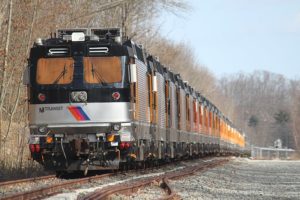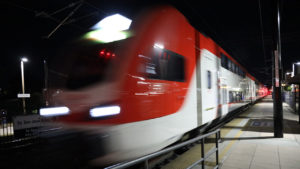Metro-North ridership beats LIRR numbers
Written by jroodNew York Metropolitan Transportation Authority Metro-North Railroad provided 82 million rides last year, up 1.4 percent over 2010, with ridership gains on all lines and in all markets from traditional morning inbound commutation to nights, weekends, middays and holidays.
On the three main lines, Hudson, Harlem and New Haven, ridership was up 1.7 percent over 2010. But West of Hudson, where the Port Jervis Line was shut down for three months after Tropical Storm Irene devastated the tracks, ridership declined 11.4 percent from the previous year.
Still, overall ridership last year was the second highest in Metro-North history, exceeded only by 2008, before the economic downturn, when annual ridership was 83.6 million.
“This growth is gratifying because people have a choice in travel. They are voting with their feet by taking Metro-North because of the value we provide,” said Railroad President Howard Permut. “This growth is the continuation of a long-term trend and is a result of our unwavering focus on reliability, cleanliness, customer service and safety.”
In December, East of Hudson ridership increased 6.4 percent, the fastest growth rate observed in 2011 and the largest monthly ridership growth rate since September 2000, when ridership jumped up 6.7 percent.
Permut pointed to on-time performance as a major reason that people choose Metro-North. Of the 209,020 trains operated last year, 96.9 percent of them arrived on time.
Metro-North ridership is projected to grow at a rate of about two percent in 2012.
The Long Island Rail Road’s overall ridership in 2011 dipped slightly lower than 2010 by 0.5 percent, going from 81.4 million riders in 2010 (adjusted for workday differences with 2011) to 81.0 million in 2011. In a developing positive trend, the LIRR saw four consecutive months of ridership increases at the end of 2011. Ridership during September through December increased by 2.2 percent over the same period last year, going from 27.2 million riders in 2010 to 27.8 in 2011, carrying about 600,000 more passengers.





